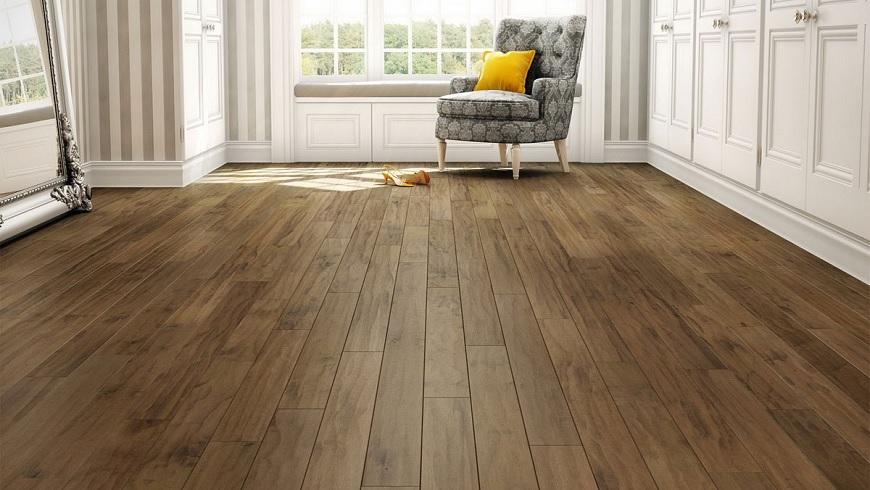
The Environmental Benefits of Choosing Sustainable Wooden Flooring
April 7, 2025When it comes to home renovation or new builds, flooring is a crucial element that plays a significant role in both aesthetic appeal and functionality. Among various flooring options, Wooden flooring Dubai has consistently been a popular choice due to its timeless elegance, durability, and versatility. However, beyond these qualities, there’s a growing shift toward choosing sustainable wooden flooring as more people become environmentally conscious.
Sustainable wooden flooring not only enhances your home’s beauty but also benefits the environment in numerous ways. In this blog, we’ll dive deep into the environmental benefits of choosing sustainable wooden flooring and why it’s an excellent choice for eco-friendly living.
Renewable Resource
One of the main advantages of wooden flooring is that wood is a renewable resource, especially when it’s sourced sustainably. Unlike synthetic materials such as vinyl or laminate, which rely on non-renewable fossil fuels, wood comes from trees that can be replanted.
Sustainable wooden flooring comes from forests that are responsibly managed, ensuring that trees are replanted and allowed to regenerate after harvesting. Certifications like the Forest Stewardship Council (FSC) or Programme for the Endorsement of Forest Certification (PEFC) help guarantee that the wood has been sourced from forests that follow strict environmental standards, including maintaining biodiversity and protecting natural habitats.
Carbon Sequestration
Another environmental benefit of sustainable wooden flooring is its ability to act as a carbon sink. Trees absorb carbon dioxide from the atmosphere as they grow, storing it in their wood, leaves, and roots. This process is known as carbon sequestration, and it helps mitigate the effects of climate change.
When wood is harvested sustainably and used for flooring, it continues to store carbon throughout its lifecycle. Unlike other building materials such as concrete or steel, which release significant amounts of carbon dioxide during production, wood can lock away carbon for decades or even centuries.
Choosing wooden flooring that comes from responsibly managed forests ensures that this carbon storage continues, contributing to lowering overall greenhouse gas emissions.
Biodegradability
Unlike synthetic flooring materials that take hundreds of years to decompose in landfills, wood is biodegradable. At the end of its life cycle, wooden flooring can be broken down naturally without causing harm to the environment. This is in stark contrast to materials like vinyl and laminate, which can release toxic chemicals and contribute to pollution when discarded.
Sustainable wooden flooring options can be repurposed or recycled once they have reached the end of their useful life. Many companies are now offering services that allow homeowners to recycle or reuse old wooden floors, reducing the amount of waste that ends up in landfills. Additionally, some wooden floors can even be composted, returning valuable nutrients to the earth.
Low Environmental Impact During Production
The production of sustainable wooden flooring generally has a lower environmental impact compared to other flooring options. For example, many hardwood flooring manufacturers are now using eco-friendly processes that minimize energy use, waste, and chemical exposure.
Sustainable manufacturers often utilize responsible sourcing practices, ensuring that the timber is cut using modern techniques that minimize waste. In addition, they may employ energy-efficient machinery and use water-based finishes, which contain fewer harmful chemicals compared to conventional coatings. As a result, choosing sustainable wooden flooring can help reduce the overall environmental footprint of your home renovation project.
Durability and Longevity
One of the key reasons wooden flooring remains popular is its durability. When properly maintained, wooden floors can last for decades, even centuries. Unlike other flooring options that may need to be replaced after a few years due to wear and tear, wooden floors improve with age and can be refinished multiple times.
The longevity of wooden flooring means that fewer resources are needed to replace it over time. This can help to reduce overall material consumption and the environmental impact associated with manufacturing, transporting, and installing new flooring. By investing in high-quality, sustainable wooden flooring, you are not only ensuring a long-lasting product for your home but also reducing your overall environmental footprint in the long term.
Energy Efficiency
Wooden floors are known for their insulating properties. They help regulate the temperature in a room, keeping it warmer in winter and cooler in summer. This natural insulation reduces the need for artificial heating and cooling systems, ultimately leading to lower energy consumption.
As homes become more energy-efficient, sustainable wooden flooring can contribute significantly to maintaining a comfortable living environment without excessive reliance on energy-hungry HVAC systems. This contributes to reducing your household’s overall carbon footprint, making your home more eco-friendly.
Support for Ethical Practices and Local Economies
Sustainable wooden flooring also supports ethical practices and helps sustain local economies. By choosing certified wood from reputable sources, you’re ensuring that workers involved in harvesting and manufacturing are treated fairly and work in safe conditions. This also promotes economic growth in local communities, particularly in areas where forests are responsibly managed.
Moreover, many companies that provide sustainable wooden flooring prioritize ethical practices such as fair labor standards, environmental protection, and supporting indigenous communities who rely on forests for their livelihoods.
Aesthetic and Emotional Connection to Nature
While not a direct environmental benefit, it’s important to consider the emotional and psychological benefits that come with having natural materials in your home. Wooden flooring, with its warm and organic texture, brings a sense of nature indoors. This connection to nature can improve overall well-being and increase the desire to protect the environment.
The presence of natural elements in your living space can help foster an appreciation for sustainability and encourage eco-conscious living. When you choose sustainable wooden flooring, you’re not just making an environmentally friendly choice but also aligning your living space with values that prioritize sustainability.
Conclusion
Incorporating sustainable wooden flooring into your home not only enhances its beauty and functionality but also provides numerous environmental benefits. From its renewable nature to its carbon sequestration abilities and biodegradability, sustainable wooden flooring is an eco-friendly choice that contributes to reducing your carbon footprint. Additionally, it helps preserve natural resources, supports ethical labor practices, and improves energy efficiency.
As awareness of environmental issues continues to grow, choosing sustainable wooden flooring is a step toward making a positive impact on the planet. Whether you’re renovating your home or building a new one, consider investing in sustainable flooring Dubai that will last for generations while benefiting both you and the environment.







